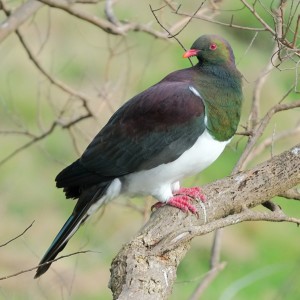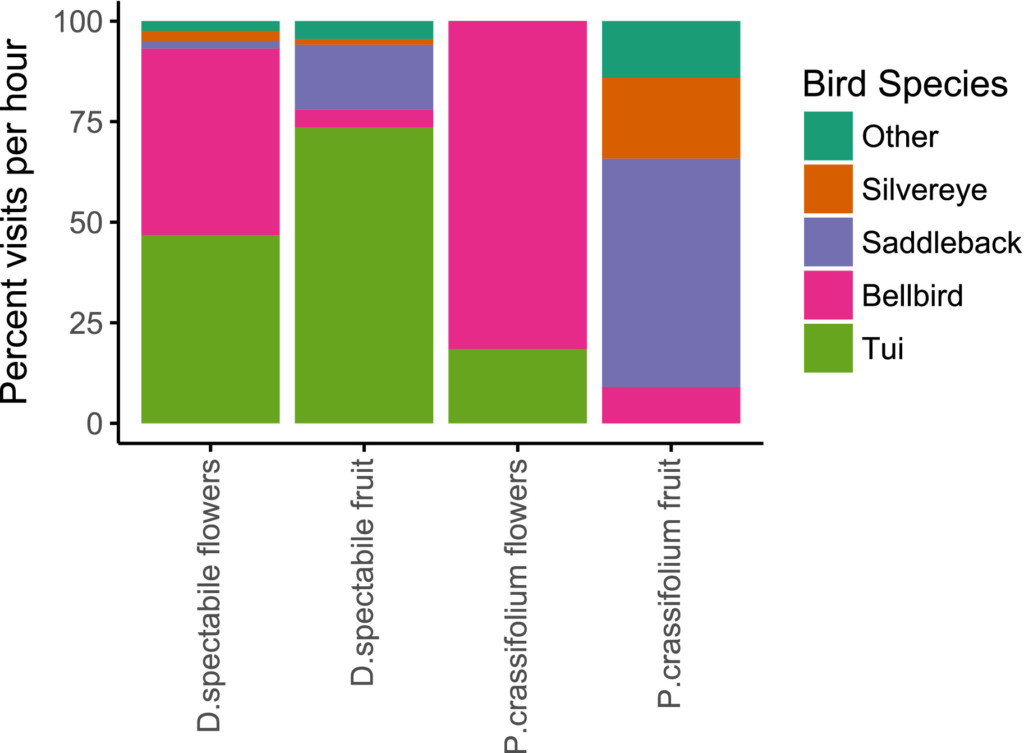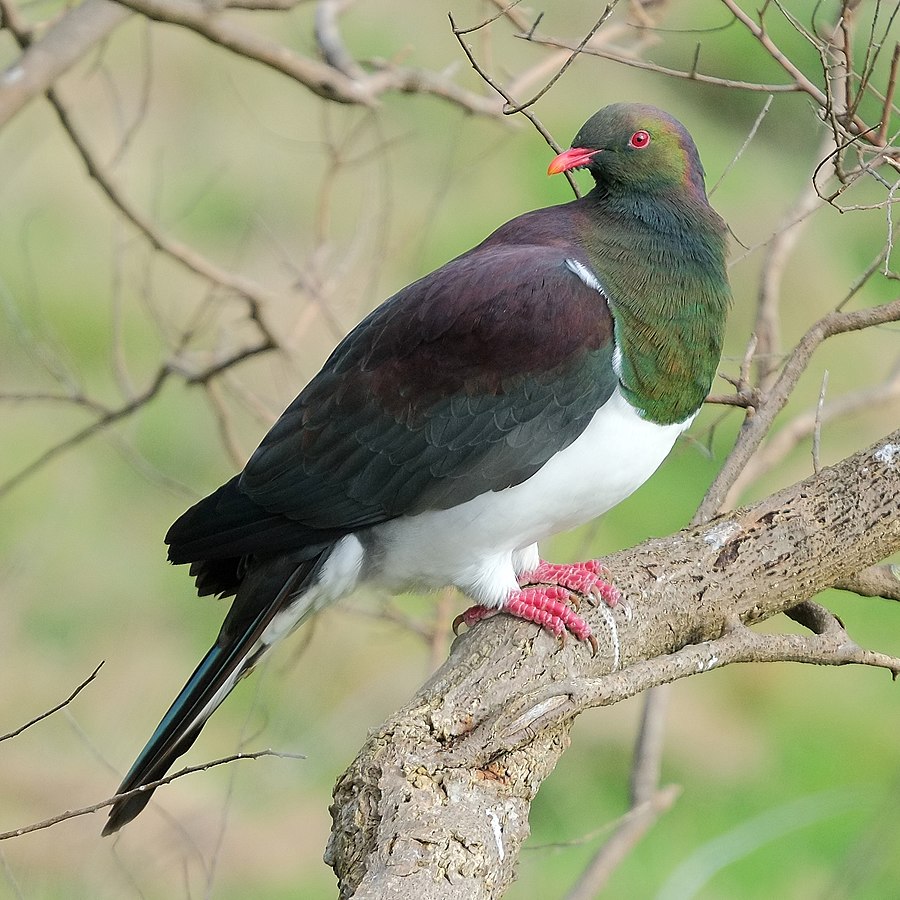
LINKED PAPER
Effects of changes in bird community composition and species abundance on plant reproduction, through pollination and seed dispersal. Anderson, S. H., Ladley, J. J., Robertson, A. W., & Kelly, D. 2021. IBIS. DOI: 10.1111/ibi.12938. VIEW
Many plant species rely on birds for pollination and seed dispersal. But what happens when these birds disappear? This question is especially relevant in New Zealand where the arrival of humans and the introduction of predators have decimated the native bird diversity (Steadman 1995). Moreover, several plant species are pollinated and dispersed by the same bird species – so-called double-mutualists (Fuster et al. 2019). The loss of these species could have devastating consequences. In a recent study, researchers took a closer look at the Kohekohe (Dysoxylum spectabile) and the Karo (Pittosporum crassifolium), two plant species in New Zealand that are visited by birds for their flowers and fruits. How are these plants coping with the loss of certain native bird species?
Pollination
The research took place in a predator-free nature reserve on the Tiritiri Matangi Island. The situation in this protected area was compared with a non-reserve location in the Wenderholm Regional Park where mammalian predators occur in low numbers. The analyses of data collected between 1996 and 2006 revealed a dramatic difference between these two sites: five of the seven endemic flower- and fruit-visiting birds were missing from the non-protected area. It concerned the Bellbird (Anthornis melanura), the Stitchbird (Notiomystis cincta), the Saddleback (Philesturnus carunculatus), the Whitehead (Mohoua albicilla) and the Kākāriki (Cyanoramphus novaezelandiae). The lack of these species resulted in reduced visitation rates of flowers for the Kohekohe (66% decline) and the Karo (75% decline). These drastic declines could not be compensated by several introduced species and the two remaining endemics: the Tūī (Prosthemadera novaeseelandiae) and the New Zealand Pigeon (Hemiphaga novaeseelandiae).

Figure 1. The number and identity of species visiting flowers and fruits of the Kohekohe and the Karo.
Seed dispersal
The situation was slightly better for seed dispersal as the fruits of both plant species were visited by a wider range of bird species (nine for the Kohekohe and ten for the Karo), including several introduced species, such as the Silvereye (Zosterops lateralis). However, the visitation rates in the non-protected area were still quite low and it is unclear whether the introduced species successfully disperse seeds. For example, Silvereyes have relatively small gapes which might limit the size of seeds they can swallow (Kelly et al. 2010). It is thus unlikely that introduced species will be able to replace the endemic seed dispersers. The findings from this study clearly show that the decline of native bird species in New Zealand affects both the pollination and dispersing rates for the Kohekohe and the Karo. The cumulative effects might pave the way for the demise of these plant species. Hence, it is of utmost importance to restore and protect the endemic bird species with a dual role in plant reproduction (Kaiser-Bunbury et al. 2010).
References
Fuster, F., Kaiser-Bunbury, C., Olesen, J.M. & Traveset, A. (2019). Global patterns of the double mutualism phenomenon. Ecography 42: 826– 835. VIEW
Kaiser-Bunbury, C.N., Traveset, A. & Hansen, D.M. (2010). Conservation and restoration of plant–animal mutualisms on oceanic islands. Perspectives in Plant Ecology, Evolution and Systematics 12: 131– 143. VIEW
Kelly, D., Ladley, J.J., Robertson, A.W., Anderson, S.H., Wotton, D.M. & Wiser, S.K. (2010). Mutualisms with the wreckage of an avifauna: the status of bird pollination and fruit-dispersal in New Zealand. New Zealand Journal of Ecology 34: 66– 85. VIEW
Steadman, D.W. (1995). Prehistoric extinctions of Pacific island birds: biodiversity meets zooarchaeology. Science 267: 1123– 1131. VIEW
Image credits
Top right: New Zealand Pigeon (Hemiphaga novaeseelandiae) | Pseudopanax | CC BY-SA 3.0 Wikimedia Commons
Blog posts express the views of the individual author(s) and not those of the BOU.
If you want to write about your research in #theBOUblog, then please see here




